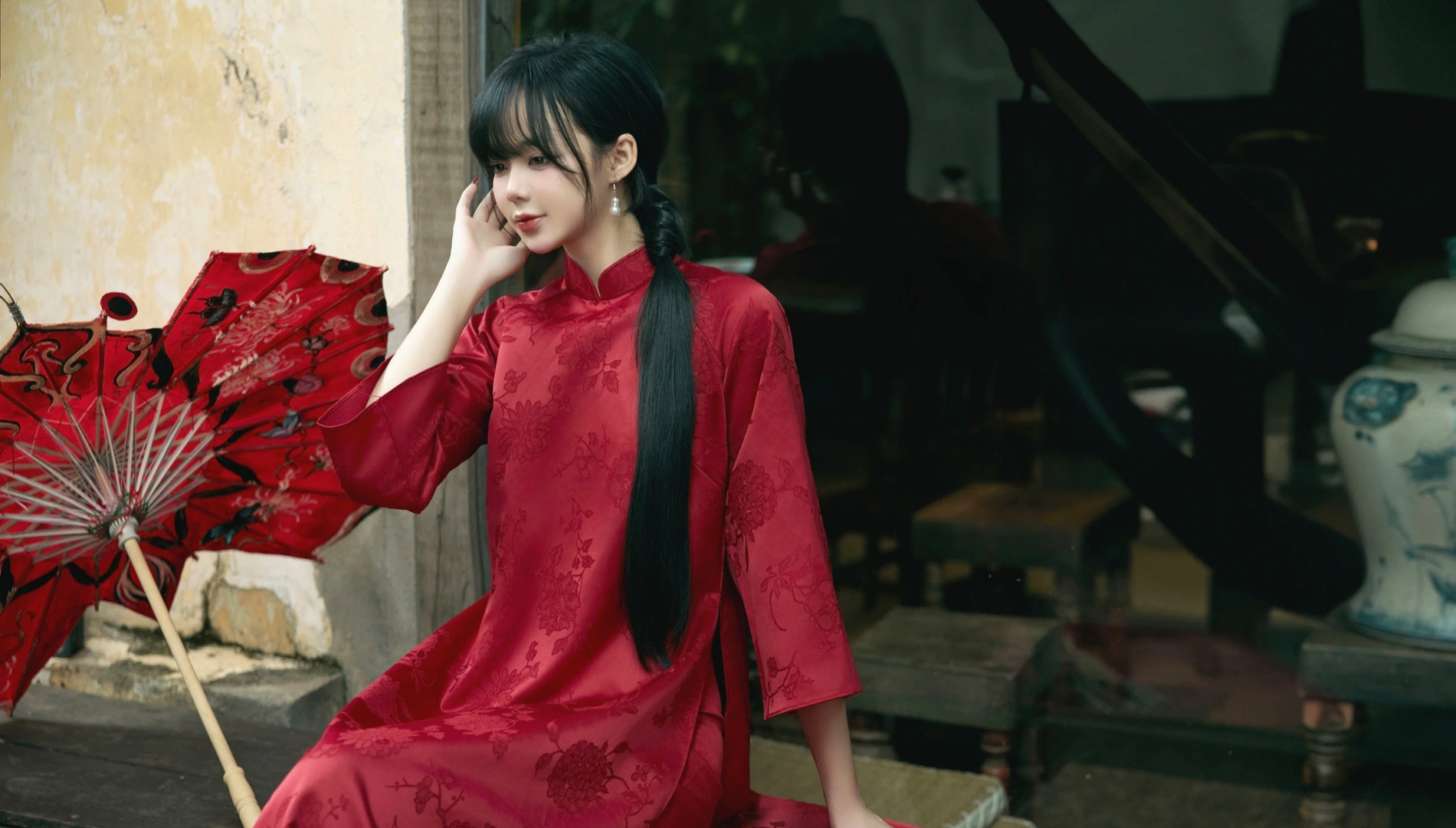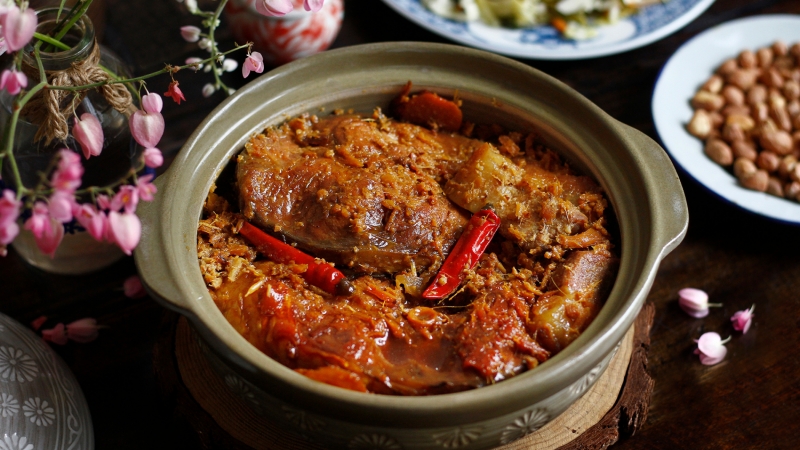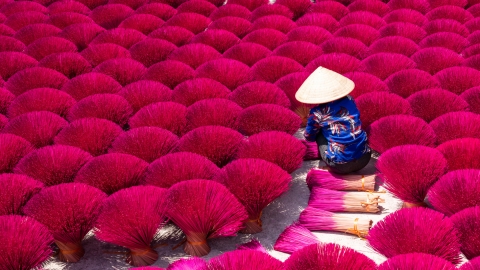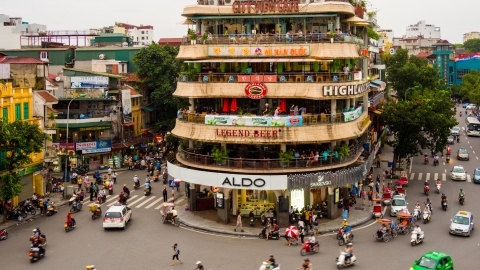The bustling atmosphere of the festival filled every corner of the city, from the peaceful small streets to the bustling commercial centers. The chirping laughter and the lively spring music blended together, creating a joyful symphony to welcome the new year. The distinctive scent of banh chung and banh tet mixed with the scent of apricot and peach blossoms wafted in the wind, reminding us of beautiful childhood memories. Tet is not only an occasion for family reunions but also an opportunity for everyone to share joys and sorrows and send the best wishes to each other.
Spring colors bloom on traditional dresses
"Dressing up for Tet" has become an indispensable part of Vietnamese traditional customs. After a period of hard work, we will certainly always want to appear before friends and relatives with a neat appearance, and exchange New Year wishes. Thus, associated with tradition, the Ao Dai is an extremely suitable outfit for the New Year, regardless of whether you decide to stick with the traditional dress or modern designs.
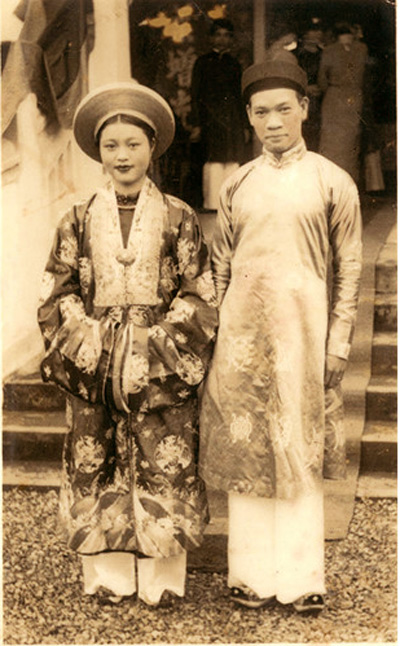
The Vietnamese soul will always remain in the ao dai, unchanged for a thousand years, no matter how much life and the shape of the ao dai change.
“In the history of its formation and development through the most important moments, the ao dai has had successful and unsuccessful modifications, but the highest value of the ao dai is that it always goes along with the changes of the times” - (Designer Minh Hanh). The more modern the country is, the more modern the ao dai is. We have countless diverse choices in style, color, fit, and width to experiment and apply every time Tet comes and spring comes.
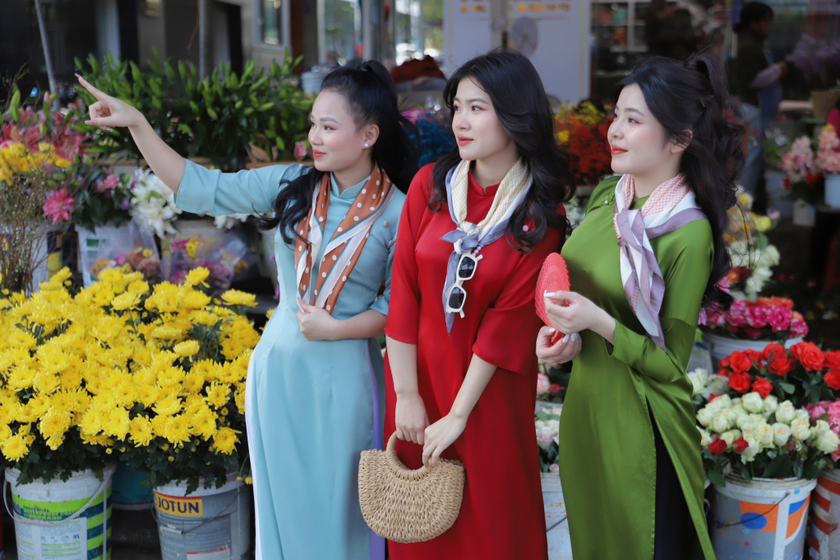
Tet in the Vietnamese soul is associated with the image of fullness, warmth and beauty in new clothes.
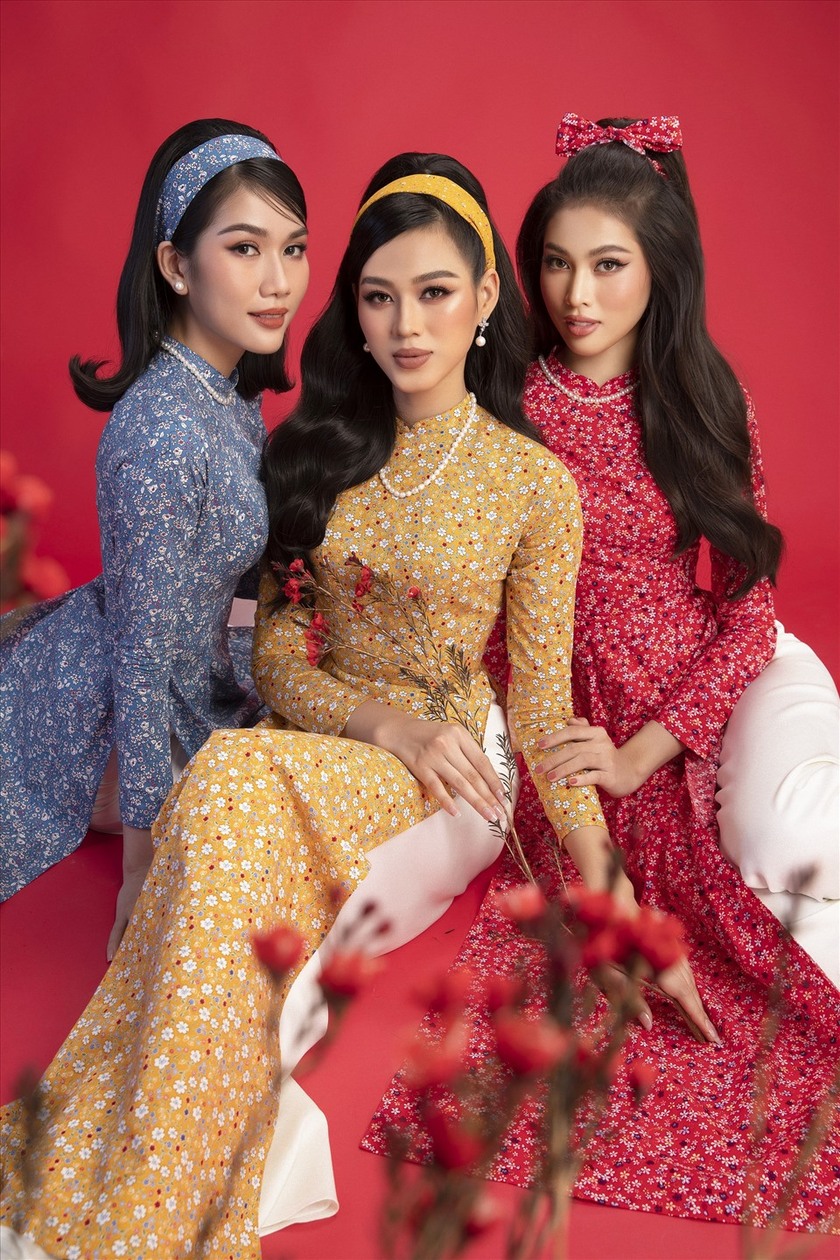
Dressing up for Tet has become a traditional beauty.
In recent years, young Vietnamese people have gradually returned to and devoted their love to the traditional cultural beauty of the nation. Ao dai has become a beloved “token”, worn by young people on special occasions such as Tet. In fact, for many people, every Tet holiday, they must have ao dai.

Charming young girl in traditional Vietnamese dress on Tet holiday
Choosing Ao Dai and Vietnamese traditional costumes during Tet not only shows respect for national cultural values but is also a way for young people to affirm Vietnamese cultural identity. Therefore, for many girls and boys born in the 90s and 10s today, Tet must have Ao Dai, Vietnamese traditional costumes, and decorations such as red parallel sentences, Chung cake strings, and peach blossoms to be "true" to Tet. Tet is like that, becoming a season where "every family, every person" shows off their beauty and welcomes Spring with the traditional costumes of the nation.

Young people wearing Ao Dai taking photos on Tet holiday
Innovate without losing identity
Nowadays, the Ao Dai is also a traditional costume in important ceremonies of the family, clan, community or in major national holidays. In particular, in recent years, the Ao Dai has been worn more and more popularly by women in schools, offices, businesses; in important events of the country, on international forums.
The Vietnamese word “ao dai” has been included in the Oxford dictionary, and has been created by domestic and foreign artists into influential works of art, containing messages of peace and honoring the beauty of women. In recent years, with their efforts and national pride, many designers have brought new beauty to the ao dai.
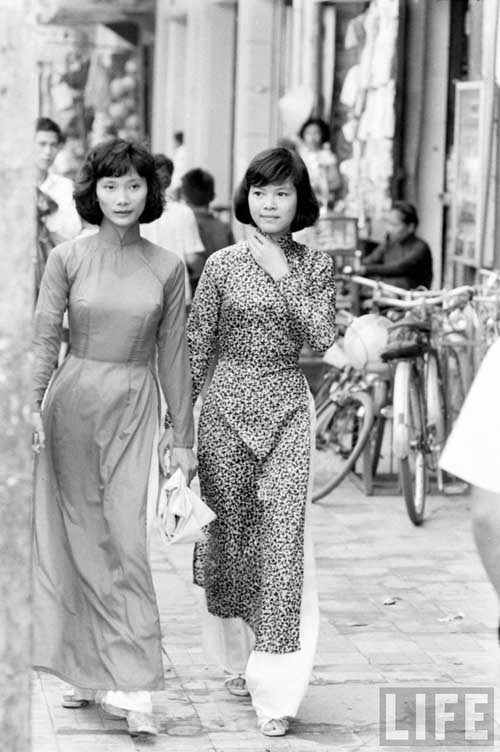
There are few outfits that are both discreet, standard, and also flatter the graceful, soft figure of Vietnamese women like the traditional ao dai.
Although there is no official document stating that the ao dai is the national costume, from the past until now, in the minds of Vietnamese people and in the eyes of international friends, the ao dai is considered a symbol containing the quintessence and culture of the Vietnamese people.
Vietnamese people are flexible and agile because of the difficult living conditions and favorable geographical location that is often coveted by other countries - Professor, Dr. Tran Ngoc Them also concluded in the book "Basis of Vietnamese Culture". And accordingly, the ao dai is also flexible because in the Vietnamese mind, it is also flexible to apply new elements to the ao dai.
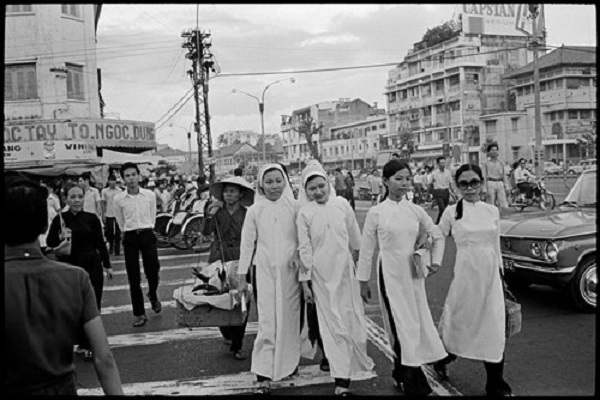
Once the daily outfit of Vietnamese women before the 1970s, the modern ao dai has the ability to transform flexibly, from style, material to pattern.
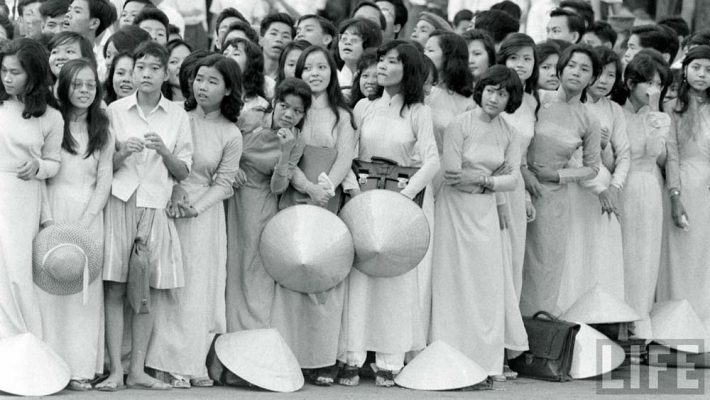
Originating from the four-flap Ao Dai in the 17th century, the Vietnamese Ao Dai has undergone many changes to serve the needs and roles of women at each time before gradually taking shape in the 1960s.
The traditional Ao Dai was once condemned, but after many changes, it became a tradition. Up to now, the Ao Dai for women has been modernized into many diverse styles, while the Ao Dai for men has not changed much. Finally, to be called an Ao Dai, the creator needs to maintain the essential characteristics such as proportions, structure,... to distinguish it from other types of Ao Dai. But in the end, everything still has to originate from tradition, from the roots of people, and culture is created by the majority.
The Ao Dai is closely associated with the life of Vietnamese people, is a symbol of traditional culture, the soul of Vietnamese women. Therefore, every time wearing the Ao Dai, every Vietnamese woman is preserving traditional cultural values. The beauty of the Ao Dai therefore adds to the unique charm of Vietnamese women; at the same time, it is also a "cultural ambassador" introducing the image of Vietnam to the world. Therefore, the use and innovation of this costume throughout history always have standards.





